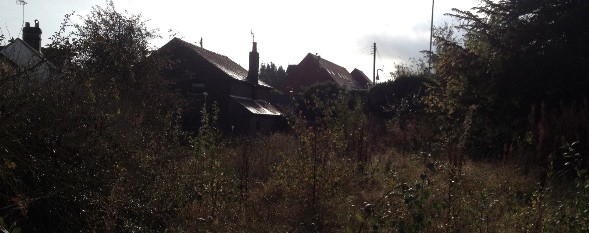Erection of a Cottage, Madeley, Crewe, Cheshire
Case Study Reference: 14-10-02
Planning Authority: Newcastle Borough Council
Planning Reference: 14/00691/FUL and 14/00691/CN11
Synopsis:
Given the sensitive nature of the development (residential) and the history of the site (workshop), a contaminated land planning condition was attached to the decision notice for the proposed development.
The first stage of discharging the condition was to prepare a Phase I desk study report in order to determine if the site has the potential to be impacted by elevated levels of contamination, and to determine the source as well as the likelihood of the risk occurring.
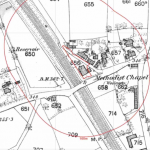 A desk study determines what issues relating to historical contamination may affect the site, this is undertaken by reviewing the site history using a combination of O.S. maps, aerial, plates and street level imagery, a review of data held by regulatory bodies (Environment Agency, local authority, BGS etc.) as well as a site walkover survey.
A desk study determines what issues relating to historical contamination may affect the site, this is undertaken by reviewing the site history using a combination of O.S. maps, aerial, plates and street level imagery, a review of data held by regulatory bodies (Environment Agency, local authority, BGS etc.) as well as a site walkover survey.
The history of the site and surrounds were researched using a combination of Ordnance 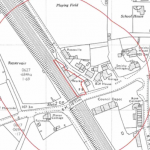 Survey (O.S.) maps, street level imagery and aerial plates, this revealed that the site was initially occupied by a chapel which was identified up to the 1959 map with a works identified on subsequent maps. Street level imagery indicated the site had been cleared.
Survey (O.S.) maps, street level imagery and aerial plates, this revealed that the site was initially occupied by a chapel which was identified up to the 1959 map with a works identified on subsequent maps. Street level imagery indicated the site had been cleared.
A smithy, reservoir and a depot were identified on the O.S. maps in close proximity to the site.
The planning history of the site was reviewed, this revealed no salient information.
Data provided by regulatory bodies confirmed the presence of cuttings, reservoir and a sand pit within 200m of the site, the works previously present on the site was also identified.
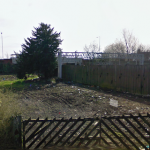 On completion of the desk based research a site reconnaissan
On completion of the desk based research a site reconnaissan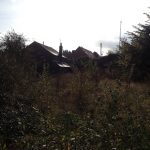 ce visit was undertaken, this confirmed the buildings associated with the works had been cleared and the site was overgrown.
ce visit was undertaken, this confirmed the buildings associated with the works had been cleared and the site was overgrown.
Once the walkover survey was completed a qualitative risk assessment was undertaken on the potential sources of contamination identified in the desk study report in order to determine if any warranted further investigation, this concluded that the potential for made ground to be present on the site was well as the past use of the site was a workshop.
The report concluded that further works were warranted in order to investigate the potential issues.
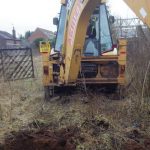 The Phase II investigation was undertaken in January 20
The Phase II investigation was undertaken in January 20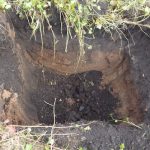 15 and comprised of the excavation of eight trial pits and two trial trenches. Samples of made ground and natural soils were taken and subject to chemical analysis.
15 and comprised of the excavation of eight trial pits and two trial trenches. Samples of made ground and natural soils were taken and subject to chemical analysis.
The initial chemical testing indicated the presence of elevated concentrations of PAH’s and barium, additional testing was undertaken in order to obtain further information for the risk assessment.
This assessment concluded that the made ground was impacted by elevated concentrations of PAH’s and barium and remediation was proposed.
Both the Phase I and Phase II reports were submitted to discharge the contaminated land planning condition (14/00691/2CN11)

